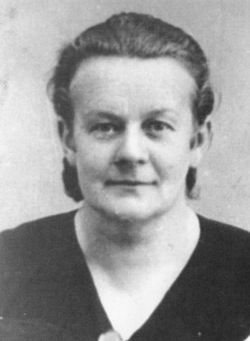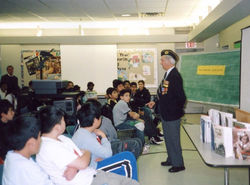

DIRECTOR /Olga ANTIMONY
The story of four children from the small town of Rokytne, who hid from Nazis in a dugout in the forests of Western Ukraine for two winters and miraculously survived. Many years later, another miracle happened: it turned out that they were now living in the same city again, this time in Toronto, Canada, where the story is filmed.
ABOUT THE FILM
This documentary tells the story of Alex Levin—one of four children who survived the Holocaust and, years later, unknowingly found themselves living in the same city, Toronto. At the heart of the film is not only his personal experience but also his mission to preserve the memory of those who did not survive and to educate future generations so that such horrors never happen again.
The film opens with a quote from Czech-Jewish writer Arnošt Lustig, which serves as its epigraph:
"There are three war-related questions that remain open to me. First, how could such civilized and cultured people as the Germans commit mass murder of defenseless individuals? Second, why did the Jews, despite all their historical experience, allow this to happen to them? And finally, why did the world let it happen?"
In search of answers to these questions, the film takes viewers on a journey through Alex Levin’s memories as he shares his story with schoolchildren across Canada. He recalls his childhood in the town of Rokytne, now part of Ukraine, which at the time was Polish territory. He describes his family, peaceful pre-war childhood, Shabbat gatherings at his grandmother’s house, school days—and the moment when everything changed.
In 1939, Germany and the Soviet Union divided Poland, and Rokytne fell under Soviet occupation. But the true nightmare began in 1941 when the Nazis invaded. For Jews, this meant ghettos, mass executions, and the daily threat of death. On August 25, 1942, when all the ghetto’s inhabitants were rounded up for execution, Alex and his brother managed to escape into the forest—where they would have to hide, survive, and fight for their lives.
The power of the film lies in its combination of personal testimony with a broader historical context. Levin does not simply recall the horrors he endured—he emphasizes the importance of passing this memory on. He tells the children:
"My brother was killed when he was five. My mother was killed. My father was killed. They can’t speak, they can’t write. I have to do it for them while I still can. I tell children: I was once a kid like you, and this is what I saw, what I lived through. If even one in a hundred remembers and tells their children that there was a man named Alex who shared his story, then I will have fulfilled my mission."
This film is not just about the past—it is about the present. Alongside Levin’s recollections, modern voices denying the Holocaust are also heard, demonstrating how even the most well-documented historical events can be questioned. The contrast between these perspectives makes the film not just a testimony to tragedy but a warning: forgetting history can lead to its repetition.
Four children who miraculously survived the war eventually found themselves in Toronto, where they built new lives and became part of multicultural Canada. Alex Levin, his brother Sam, Larry Gomulka, and Yona Bromberg... They raised children and grandchildren. But they never forgot who they were and what they endured.
This film is their voice. A voice of memory that cannot be silenced.
BEHIND THE SCENES
GALLERY
 |  |  |  |  |
|---|---|---|---|---|
 |  |  |  |  |
 |  |  |  |  |
 |  |  |  |  |
 |  |
